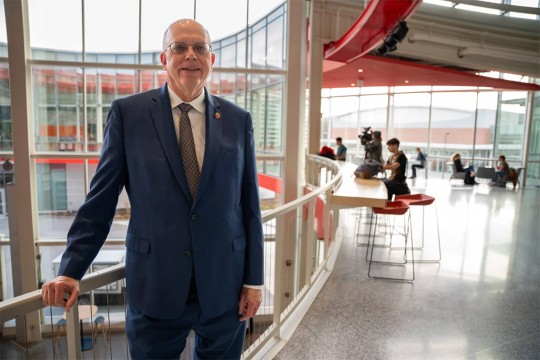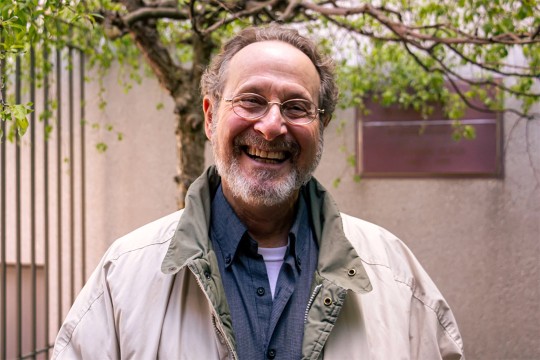Roberley Bell, College of Imaging Arts and Sciences
Eisenhart Award for Outstanding Teaching honoree
A. Sue Weisler
Bell: Her energy transcends the classroom
Roberley Bell practices what she preaches. She believes that to excel at teaching, one must excel at scholarship outside the classroom. “What we teach in the classroom comes from our participation in the discipline,” says Bell. “You then bring that energy and drive to your students. I think in an academic setting, scholarship and teaching can’t be separated.” It’s proved to be an award winning philosophy.
Bell, professor in the foundations department in the College of Imaging Arts and Sciences, first won the coveted Eisenhart Award for Outstanding Teaching in 1999. In 2005, the college honored her with the Gitner Prize, an annual award presented to a faculty member who makes outstanding contributions to his or her profession. “I feel very honored,” she says. “It means a lot to me because I think these two awards go hand in hand.”
Bell is also proud to be recognized for teaching first-year students. She teaches 3-D design to freshmen and says it’s a critical transition point in their lives. “We have to be the ones to help students find that beginning. Students come to us from high school, and they have this idea of what it is they want to do, but they really don’t know what that is. And so we are opening up a whole new world to them and affording them all kinds of opportunities they don’t know exist.” Bell acknowledges the road to personal discovery for freshmen is not always an easy one. Art, design and craft majors must take a 3-D design foundations course. “They would rather be in their design class or studio art class, so it can be a challenge. What’s rewarding for me is when I really push students to research and conceptualize ideas, and in the end their work is good. I know I’m helping them to evolve and find out who they are.”
Cory Card, who earned his BFA and MFA in fine art studio at RIT, had Bell as a freshman and a graduate student. “Roberley Bell is one of those rare teachers who constantly demands and receives excellence from her students,” says Card. “Her teaching impacted me in various ways. She exposed me to concepts and ideas that helped me excel even after my years at RIT. Roberley maintains a vast knowledge of contemporary art and the art-making process which she passes on to her students.”
Bell teaches upper level courses in public art/public space, installation art and contemporary art history. One of her classes is Thinking about Making: The Practice of Art in a Global Society. “I developed this course because I felt my students views of the world were far too narrow. It’s really important to me students reach out to the world around them.” Bell’s personal sculpture work will soon take her half way around the world. She will be on sabbatical next school year.
During her time away she will do a residency at The Stadt Kunstlerhaus, an art house in Salzburg, Austria, for a garden research project. Her sculptures center around manmade landscape. “I’m very interested in how we mediate between the real and the artificial. And so my work is very playful, but it’s also a critique of how humans control nature.” She is currently designing a floating garden for a sculpture park outside of New Haven, Conn. In 2004, Year in Review, a guide highlighting the country’s best public art projects, featured one of Bell’s sculptures commissioned for the Public Art Biennial at the Neuberger Museum on the State University of New York College at Purchase campus.
Whether inside or outside the classroom, Bell believes the educational process is a two-way street. She recalls the philosophy of one of her professors at Alfred University, Bill Perry. “He would say to me and my classmates, ‘I can put the information within reach, but I can’t hand it to you.’”















